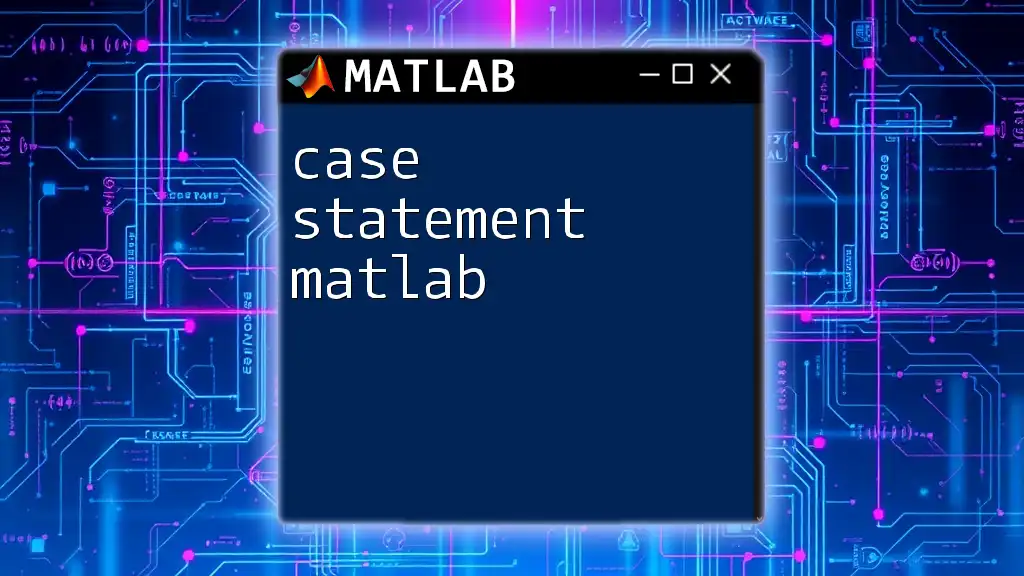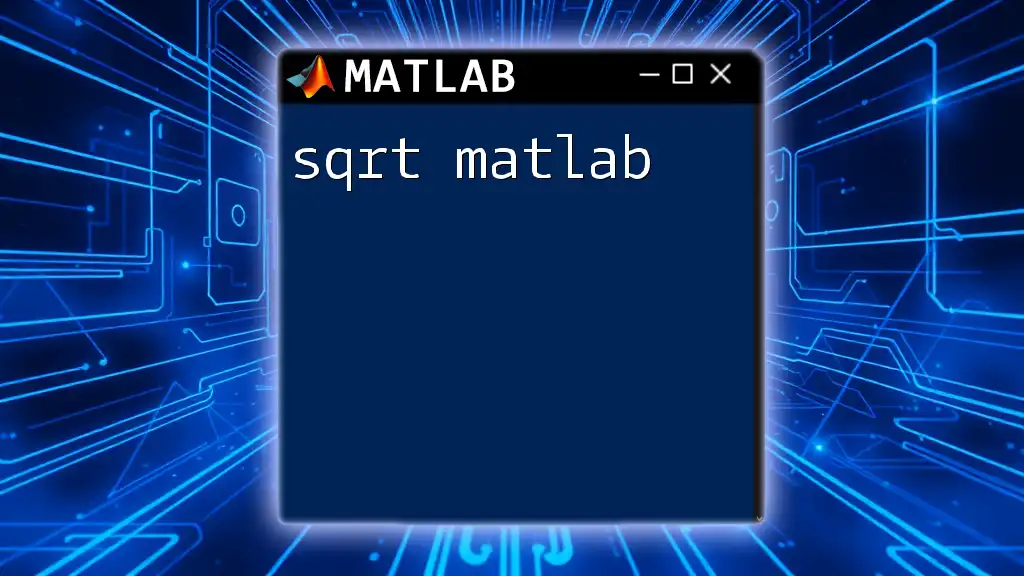The Chi-Square test in MATLAB is used to determine if there is a significant association between categorical variables by comparing observed frequencies to expected frequencies.
% Chi-Square Test Example
observed = [30, 10; 20, 40]; % Example observed frequency table
expected = [25, 15; 25, 35]; % Example expected frequency table
chi2stat = sum((observed - expected).^2 ./ expected(:)); % Calculate Chi-Square statistic
p_value = 1 - chi2cdf(chi2stat, 1); % Calculate p-value
disp(['Chi-Square Statistic: ', num2str(chi2stat), ', p-value: ', num2str(p_value)]);
What is a Chi-Square Test?
The chi-square test is a statistical method used to determine if there is a significant association between categorical variables. It evaluates whether the observed frequencies in a contingency table differ from the expected frequencies under the null hypothesis. There are mainly two types of chi-square tests: goodness-of-fit test and test of independence.
Importance of Chi-Square Test in Data Analysis
The chi-square test plays a crucial role in various fields, including social sciences, biology, and marketing research. It helps researchers identify relations and make informed decisions based on data. Its real-world applications include determining whether a new drug is effective compared to a placebo or assessing preferences in consumer surveys.

Setting Up MATLAB for Chi-Square Analysis
Installing MATLAB
Starting with MATLAB is straightforward. If you don't have it installed, visit the official MATLAB website, download the installer, and follow the on-screen instructions. It’s essential to choose the right installation options based on your requirements.
Useful Toolboxes for Statistical Analysis
To facilitate statistical analysis, make sure to utilize the Statistics and Machine Learning Toolbox. This toolbox includes an array of functions specifically designed for performing statistical tests and data analysis. Familiarizing yourself with these functions will enhance your ability to implement chi-square tests and other statistical methods efficiently.

Understanding the Chi-Square Test
Types of Data Suitable for Chi-Square Test
The chi-square test is appropriate for categorical data, which consists of categories rather than numerical values. Examples include observations like "yes/no," types of fruits, or grades (A, B, C). Ensure that your data meets the assumptions of the chi-square test, such as the minimum expected frequency in each category.
Formulating Hypotheses
Before performing a chi-square test, you should clearly formulate your null and alternative hypotheses:
- Null Hypothesis (H0): Assumes no association between the variables.
- Alternative Hypothesis (H1): Suggests that an association exists.
Defining these hypotheses correctly is critical for interpreting the results meaningfully.

Conducting a Chi-Square Test in MATLAB
Preparing Your Data
Data preparation is pivotal. Organize your data in a way that reflects the categories you're analyzing. This could include creating a contingency table for the test of independence or simply listing observed frequencies for the goodness-of-fit test.
Example Dataset Creation
Here’s how you can create a sample dataset in MATLAB:
% Creating an example dataset
data = [20, 30, 25;
10, 50, 40];
Using the `chi2gof` Function for Goodness-of-Fit
The goodness-of-fit test can be performed using the `chi2gof` function in MATLAB. This function tests whether the observed data distribution fits an expected distribution.
Goodness-of-Fit Test Example
Here’s an example demonstrating the goodness-of-fit test:
% Performing a goodness-of-fit test
observed = [50, 30, 20];
expected = [40, 40, 20];
[h, p] = chi2gof(observed, 'Expected', expected);
disp(['Hypothesis Result: ', num2str(h)]);
disp(['P-Value: ', num2str(p)]);
In this code:
- `observed` and `expected` represent the actual and expected frequencies, respectively.
- The output `h` indicates whether to reject the null hypothesis (1 = reject; 0 = fail to reject).
- The `p` value helps assess statistical significance.
Using the `chi2cont` Function for Test of Independence
For assessing independence between categorical variables, the `chi2cont` function can be employed. This function examines the relationship in a contingency table.
Test of Independence Example
Consider this example to conduct a test of independence:
% Creating a contingency table
contingencyTable = [30, 10;
5, 55];
% Performing the test
[h, p, stats] = chi2cont(contingencyTable);
disp(['Hypothesis Result: ', num2str(h)]);
disp(['P-Value: ', num2str(p)]);
This code snippet creates a contingency table and performs the test. Similar to the goodness-of-fit test, the output variables indicate whether the null hypothesis should be rejected, and the p-value communicates the strength of the association.

Interpreting the Results
P-Value Significance
Interpretation of the p-value is key to understanding your results. Generally, a p-value less than 0.05 suggests a statistically significant association, prompting a rejection of the null hypothesis. Always consider the context of your research when assessing significance.
Reporting the Findings
When reporting your findings, include both the hypothesis result and p-value. For instance:
- "The hypothesis result showed significant evidence against the null hypothesis (h=1) with a p-value of 0.03, indicating an association between the studied variables."
This structured reporting allows for clear communication of results and enhances the credibility of your analysis.

Common Mistakes to Avoid
When conducting a chi-square test in MATLAB, be wary of common pitfalls:
- Inadequate Sample Size: Ensure your sample sizes are sufficient for meaningful results.
- Expected Frequencies: Check that all expected frequencies are greater than 5, as this is a key assumption of the test.
- Misinterpreting P-Values: Understand that a p-value alone does not confirm practical significance.
If you encounter issues, review your dataset and methodology to ensure you’ve adhered to the assumptions of the chi-square test.

Conclusion
The chi-square test is a powerful tool for analyzing categorical data. Mastering its implementation in MATLAB enhances your statistical analysis capabilities, providing insight into relationships within your data sets. Embrace this knowledge and apply it effectively to make informed data-driven decisions.

Additional Resources
To further enhance your understanding and application of chi-square tests in MATLAB, consider exploring:
- The official MATLAB documentation, which provides a detailed breakdown of statistical functions.
- Online courses specifically focused on statistical data analysis in MATLAB.
- Books and articles on statistical theory to deepen your comprehension of chi-square tests and their applications.
By leveraging these resources, you can solidify your skills and unlock the full potential of statistical analysis in MATLAB.

















